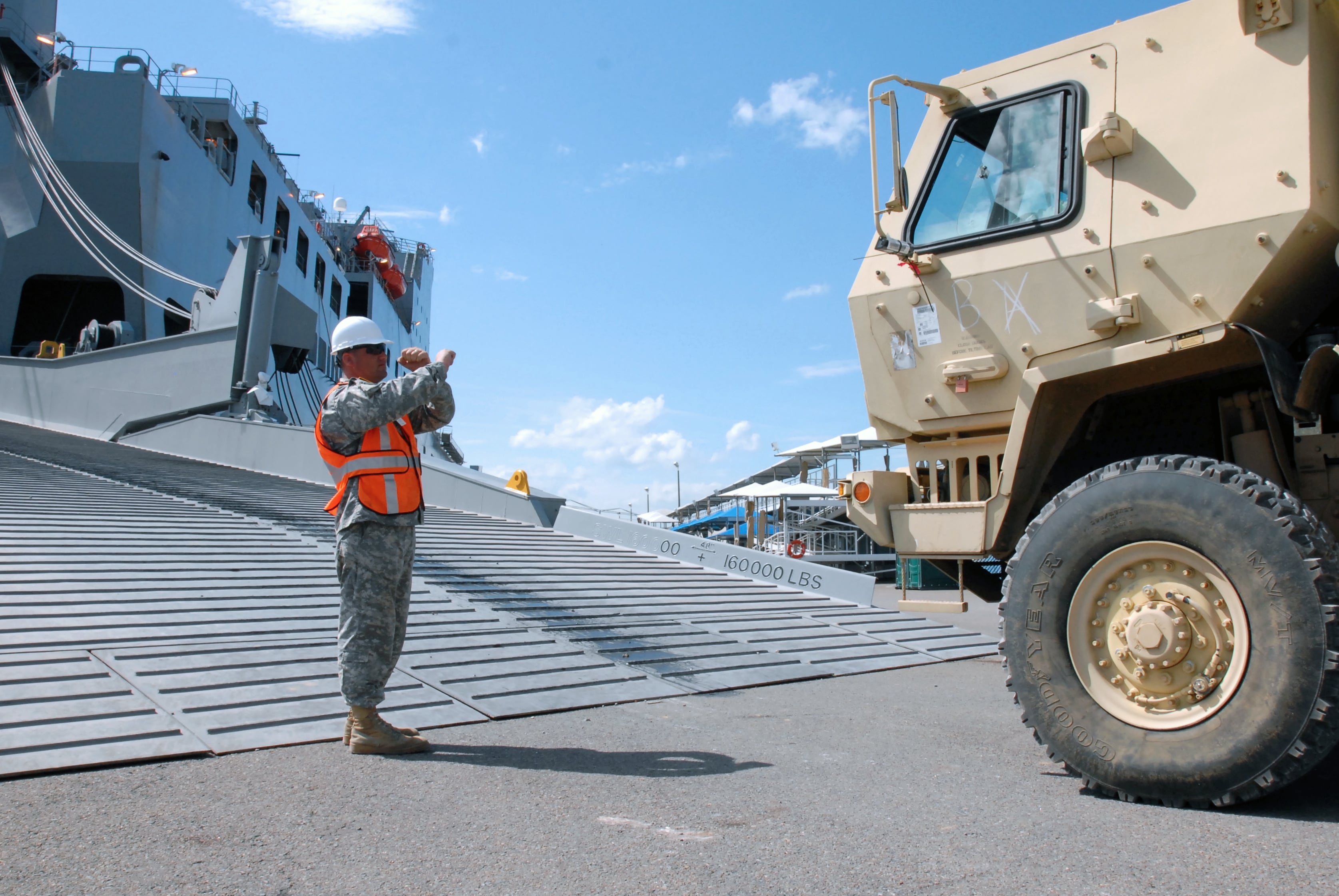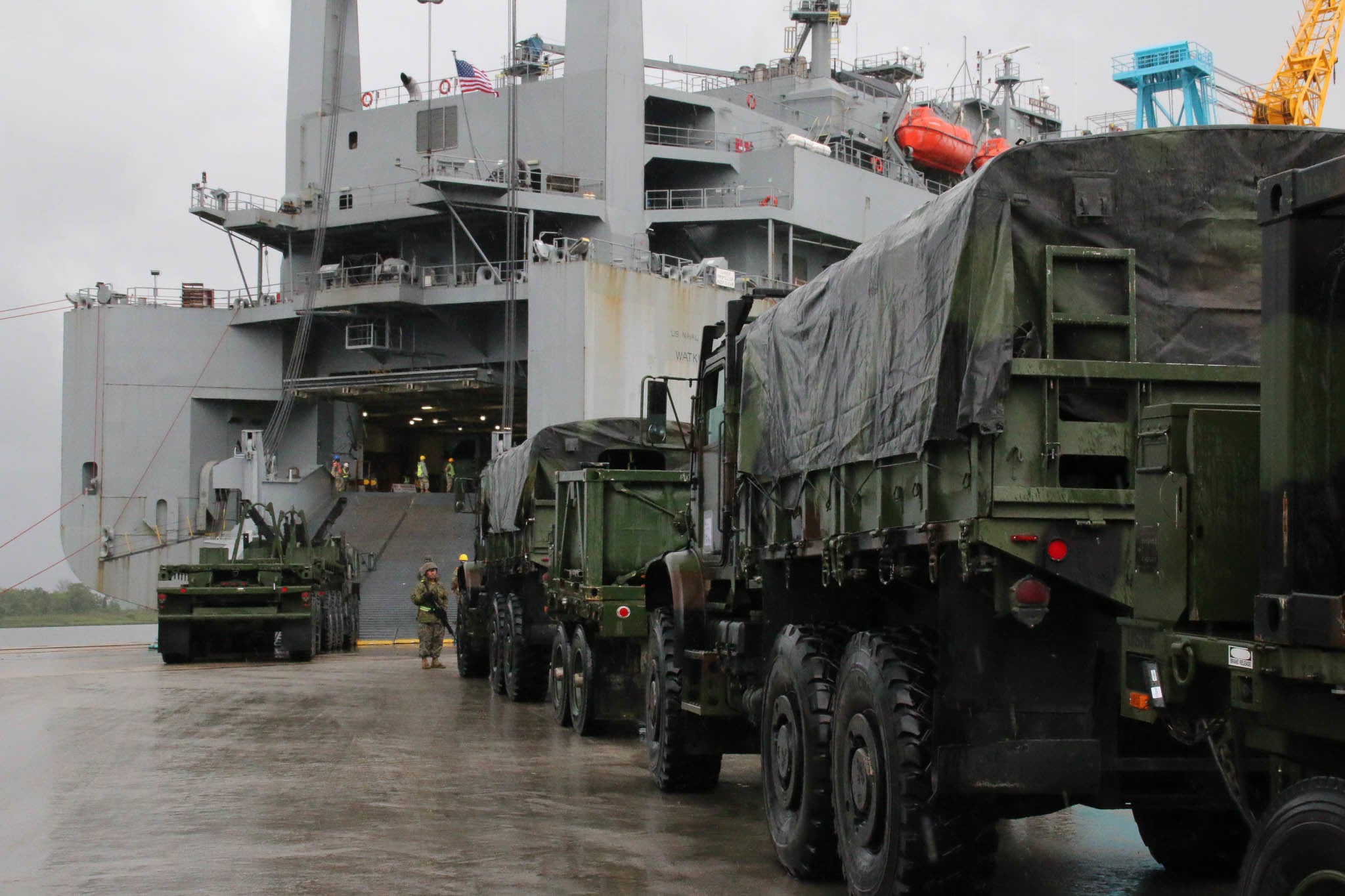WASHINGTON — The White House wants the U.S. Navy to find new ways to replace its aging sealift fleet, a move that could set back efforts that military officials consider vital to maintaining the military’s ability to project power.
The Office of Management and Budget, in a Dec. 16 memo to the Department of Defense obtained by Defense News, directed the department to come up with a more cost-effective plan than the Common Hull Auxiliary Multi-Mission Platform, known as CHAMP. The Navy planned to use that hull as part of a sealift recapitalization program.
The sealift fleet is a collection of ships paid for by the Navy that are either used to forward-deploy supplies and gear in theater in case of an emergency (known as maritime pre-position ships) or are kept in reserve in an elevated state of readiness so they can be called upon to surge in a crisis. In the event of a major war, up to 90 percent of the Army’s and Marine Corps’ gear would be transported by those sealift ships.
RELATED

The Navy planned to develop and field two variants of the CHAMP, one for sealift purposes and one for other auxiliary ship missions such as the submarine tending, hospital ships, and command-and-control platforms. But the White House has blanched at a cost estimate of upward of $1.3 billion for the submarine tender variant of the CHAMP platform, planned for acquisition in 2024.
“The CHAMP submarine tender and CHAMP sealift vessels are not cost-effective solutions. The revised estimate for the sub tender ($1.3 billion) is even more than the $1 billion in the FYDP [Future Years Defense Program] and more cost-effective alternatives should be explored, including procuring and converting a used vessel,” the memo read.
The memo amounts to a back-and-forth between the DoD and OMB on areas of disagreement inside the Pentagon’s 2021 budget request, which has yet to be finalized. Bloomberg News and Breaking Defense previously reported on aspects of the memo.
The memo also said the shipbuilding industry should prioritize warships.
“The Navy should not proceed with CHAMP development for a sealift vessel and should seek legislative relief to procure additional used sealift vessels in the [fiscal 2021 National Defense Authorization Act],” the memo read, referencing a previous requirement from Congress to begin procuring new sealift ships. “Procuring used sealift vessels and submarine tenders would also allow the industrial base to prioritize the Administration’s battle force ship procurements.”
A Navy spokesman declined to comment on the memo and said all aspects of the budget are “pre-decisional.”
The sealift fleet is either rapidly becoming obsolete or is nearing the end of its useful service life. The bulk of the Navy’s reserve force ships will be nearing 50 years old by the end of the 2020s. A report obtained by Defense News in October 2018 showed that the Navy would fall below its required capacity by the end of the 2020s, and be at less than half the required capacity by 2035.
That means that the United States, with one of the largest and best-equipped land forces in the world, would be unable to effectively transfer its equipment and personnel from the United States to either Europe or Asia in the event of war.
In March, Indo-Pacific Command head Adm. Phil Davidson told the House Armed Services Committee that the U.S. absolutely must recapitalize its sealift fleet if it’s going to be able to support a war in the theater.
“Clearly recapitalization of our sealift system is going to be critically important, as it’s aging out and really has propulsion plants that [are] expiring in capability and our ability to maintain them,” Davidson said. “It’s [a] risk to our troops and all of our people that are forward in the region if there is any delay in our ability to deliver the logistics in accordance with the [operation] plans.”

Imminent collapse
The Navy previously told Congress that its sealift capacity is in imminent danger of collapse. Study after study conducted from 1992 through 2013 shows the DoD requirement for government-owned sealift capacity is 15.3 million square feet, with 19.6 million square feet needed overall, the extra capacity coming from 60 U.S.-flagged commercial ships in the Maritime Security Program available to the military in a crisis.
Those government-owned ships include 26 Military Sealift Command pre-positioning ships and 15 roll-on/roll-off surge force ships, as well as 46 ships in the Ready Reserve Force. Many of the ships in the Ready Reserve Force run on obsolete steam propulsion, which has created severe manning issues for the Maritime Administration, which runs the force.
A Navy report sent to Congress in March, titled “Sealift That the Nation Needs,” shows that if the issue isn’t addressed soon, the force falls to about 12 million square feet of sealift capacity by 2030 and somewhere around 7.5 million square feet of capacity by 2035 — less than half the sealift required.
In order to offset the coming crisis, the Navy and the Maritime Administration came up with a three-pronged approach, according to the Navy’s report: buy used ships off the open market and retrofit them for DoD purposes; procuring CHAMP; and perform service-life extensions on ships the Navy thinks could benefit from such efforts.
RELATED

The Navy’s plan has been to build CHAMP sealift variants and use them to replace the current maritime pre-positioning ships, then move the current pre-positioning ships to the Military Sealift Command’s surge force fleet, and then move some of those ships to the Ready Reserve Force, which is the largest single portion of the nation’s sealift capacity but also the oldest and in most need of replacement.
The Navy plans to further recapitalize the Ready Reserve Force ships with the used ships bought off the open market and refitted to meet DoD needs.
Ultimately, recapitalizing the sealift fleet is a cost-effective way to signal to Russia and China that the U.S. is serious about great power competition, said Bryan McGrath, a retired destroyer captain who runs defense consultancy The Ferrybridge Group.
“There are lots of signals that you can send that you are serious about preparing for great power war,” McGrath said in a 2018 interview. “The bang for the buck you get for force closure — that is, the ability to get your forces to the fight — is outsized. It’s considerable.
“When you are able to demonstrate you have the ability to move the ground forces you need, in the time you need, depriving the adversary its natural advantages gained from proximity to the battlefield — that is a signal. And, relatively speaking, it’s a signal you can send at not much cost.”
David B. Larter was the naval warfare reporter for Defense News.






